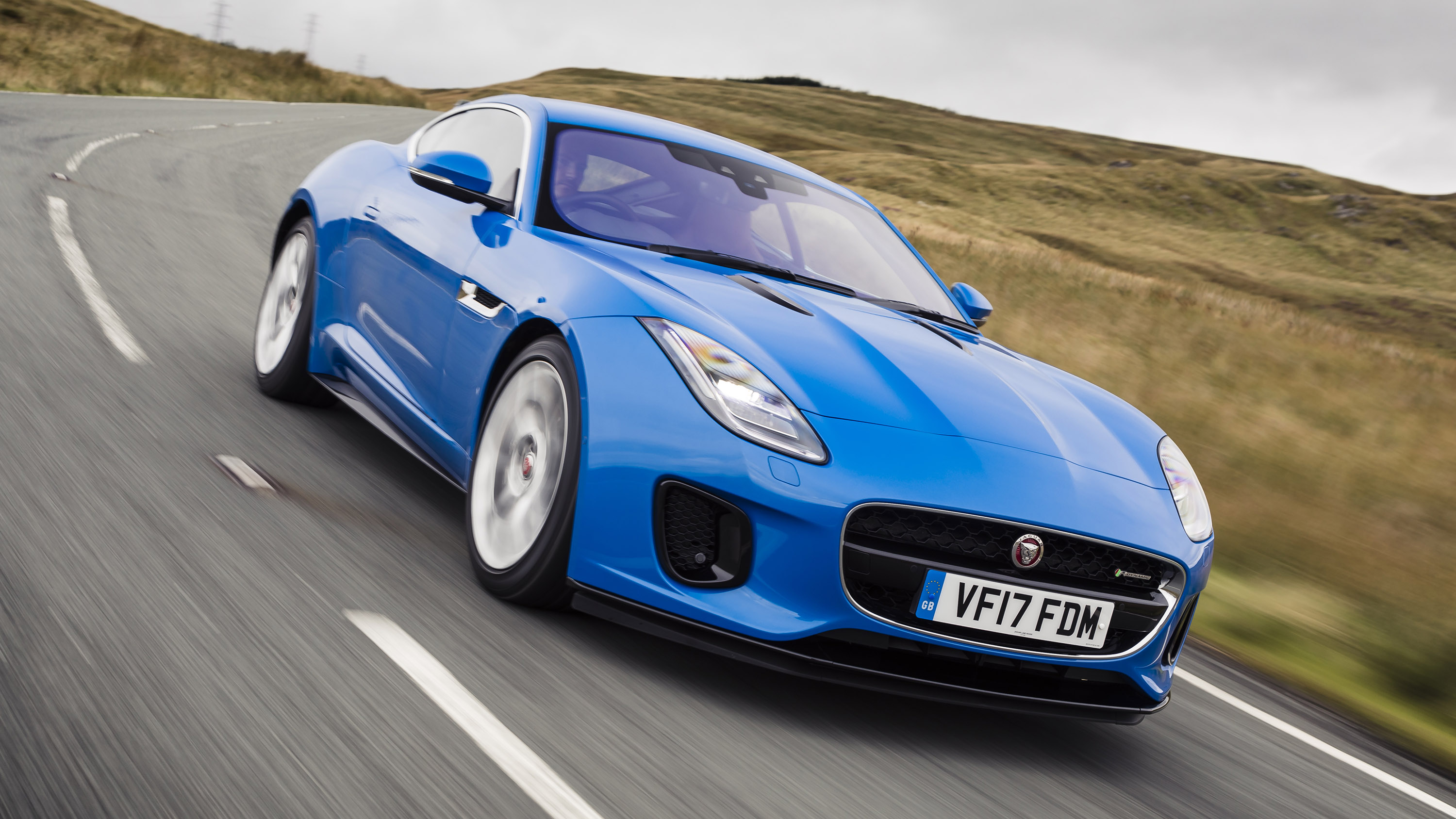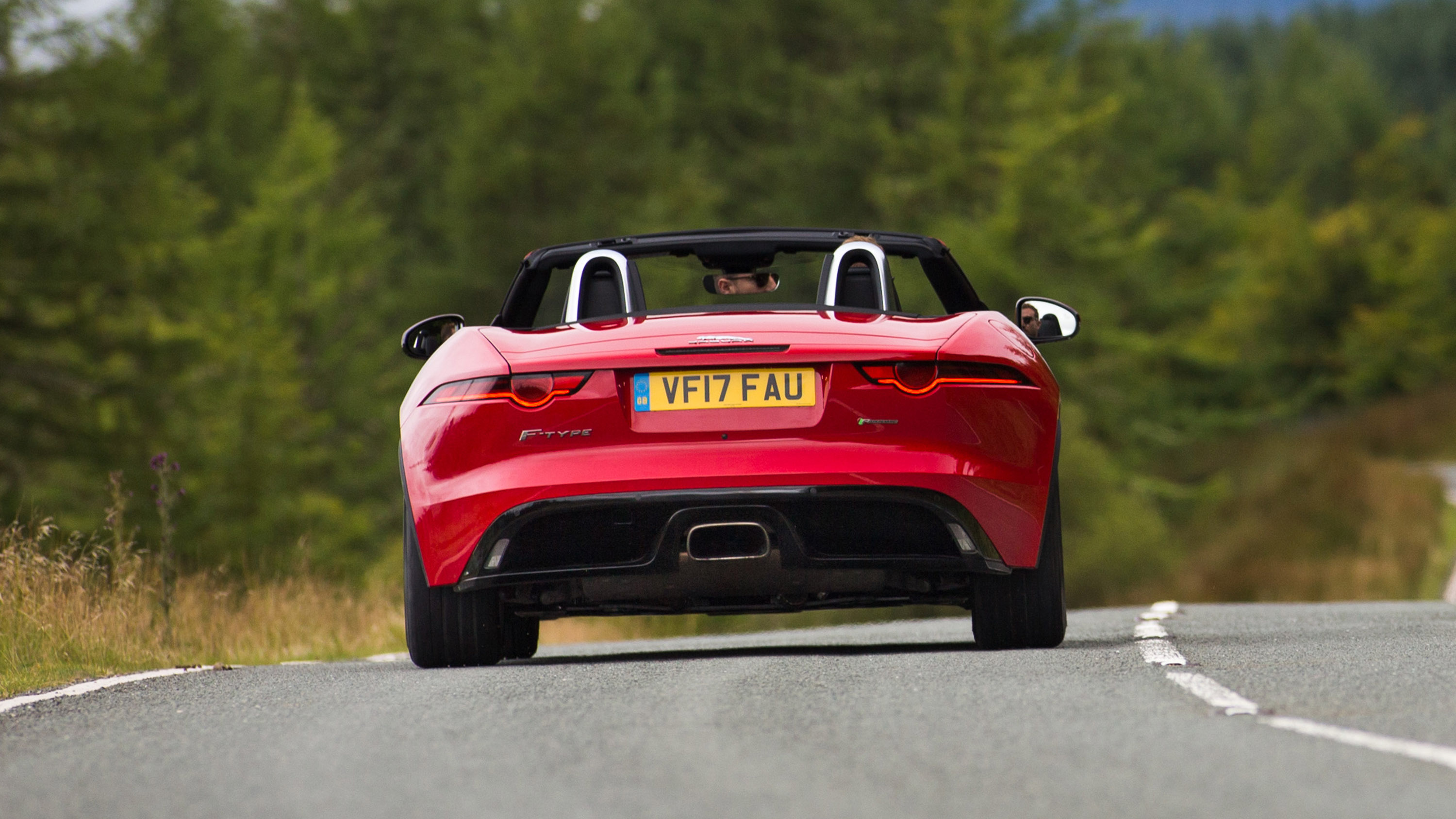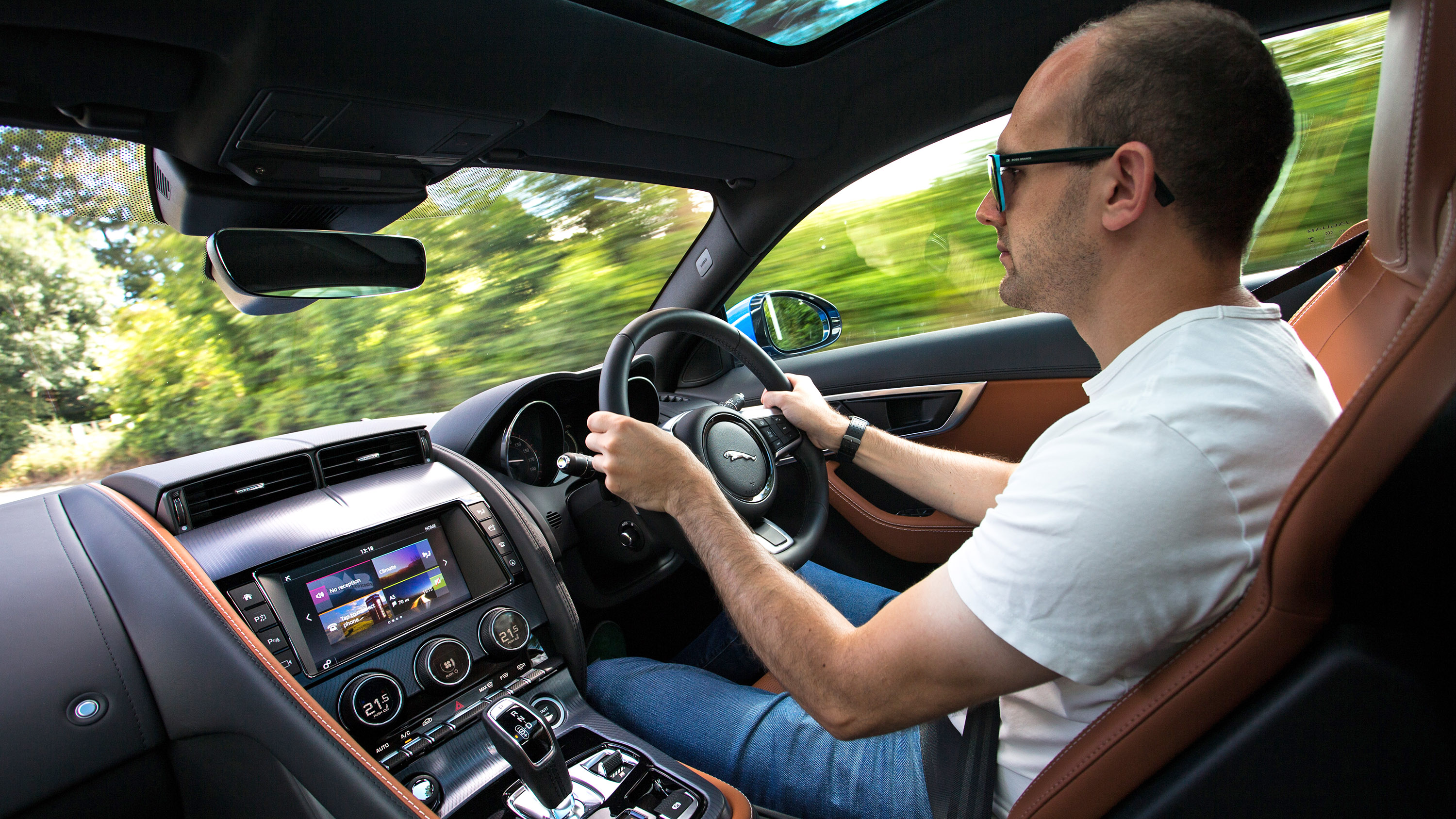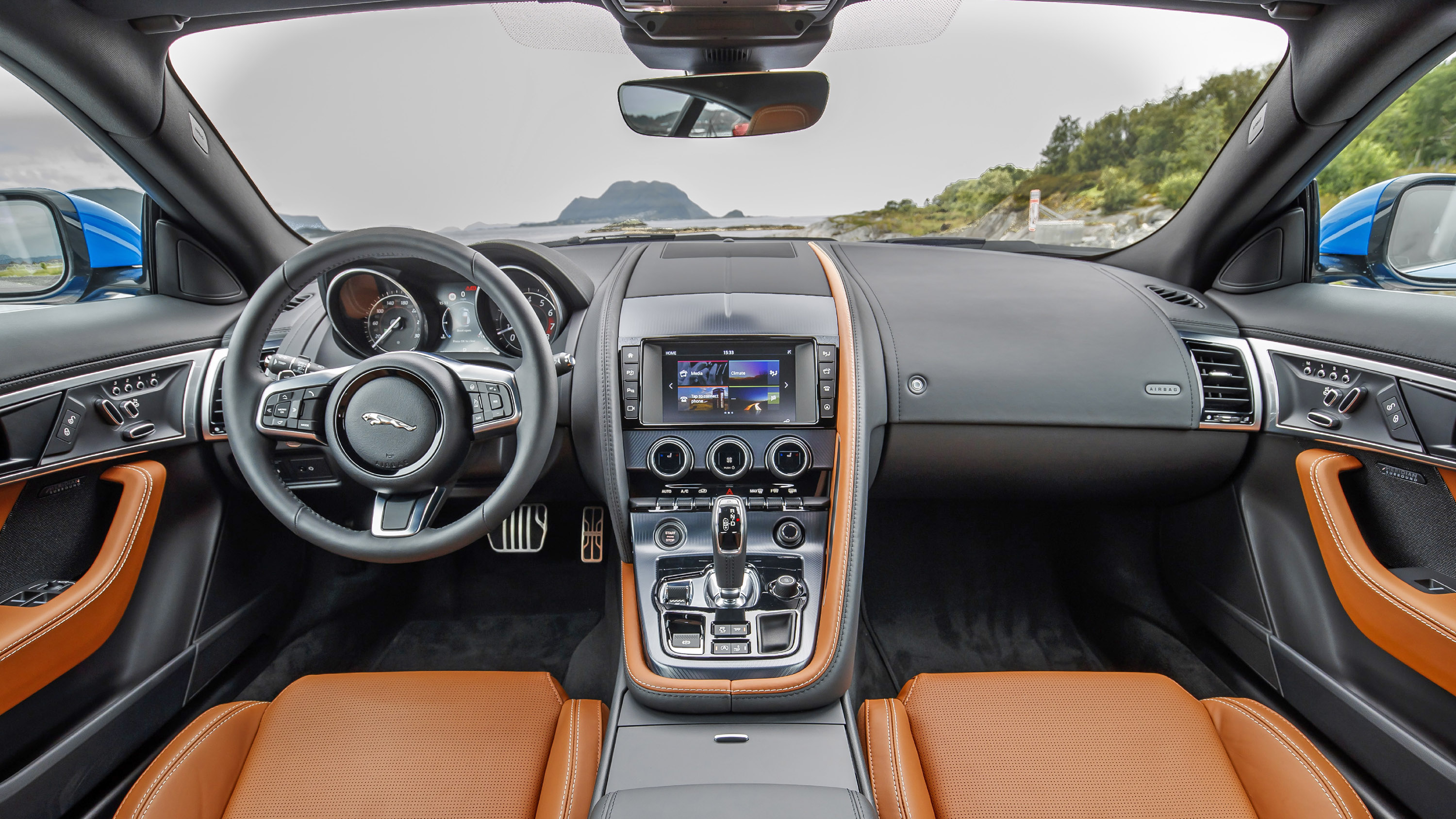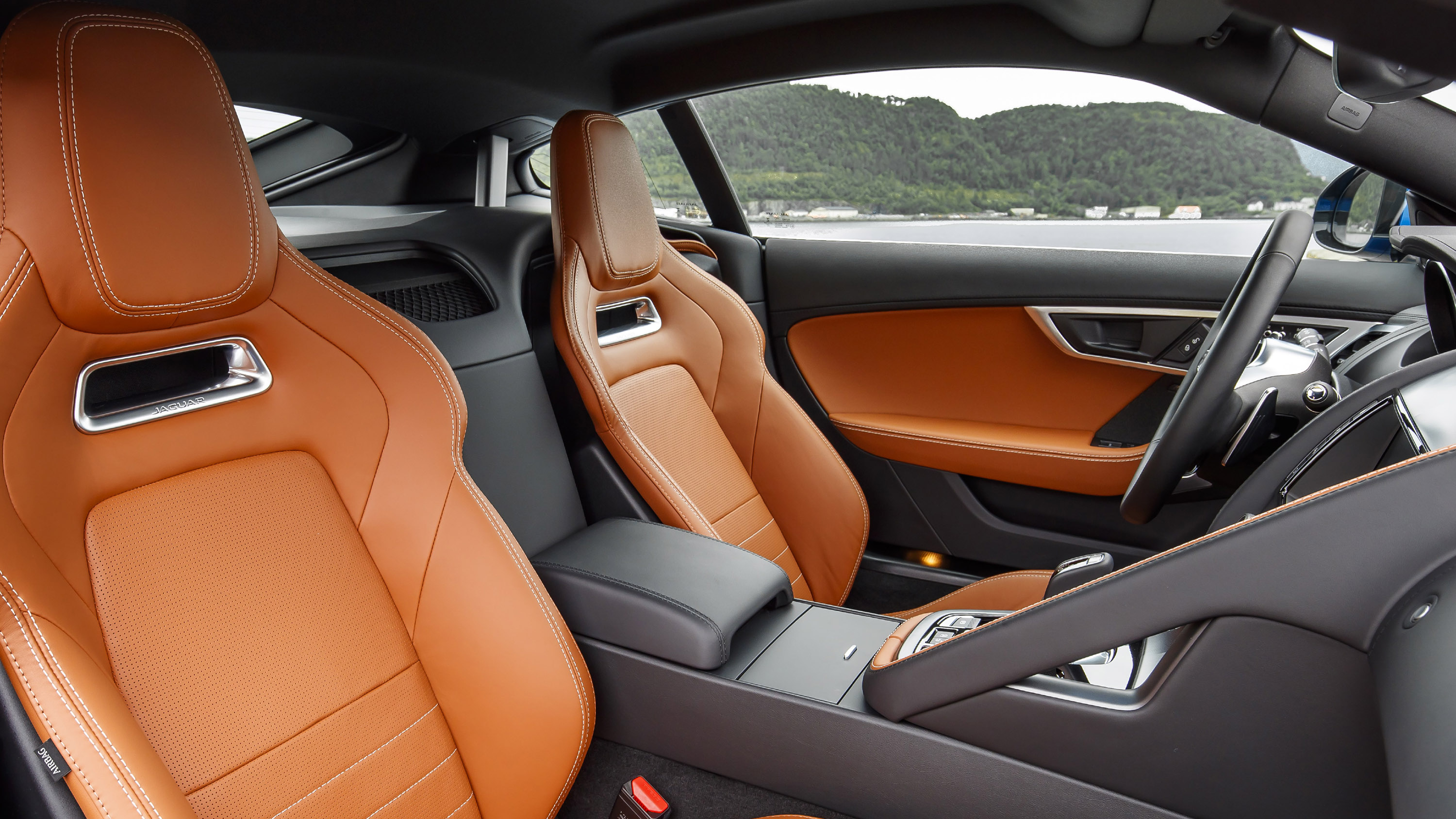
SPEC HIGHLIGHTS
- BHP
300bhp
- 0-62
5.7s
- CO2
179g/km
- Max Speed
155Mph
- Insurance
group41E
Is this a new Jaguar F-Type?
Sort of. The F-Type has had a mid-life update, and with it comes a new engine. Joining the raft of V6s and V8s you can currently buy is a 2.0-litre four-cylinder petrol engine. Yep, downsizing has grasped another sports car.
While the F’s other engines all use a supercharger, this 2.0-litre ‘Ingenium’ unit is turbocharged. Which means it punches above its diminutive size – with 296bhp and 295lb ft, yielding a 5.4sec 0-62 time and 155mph top speed – while allowing the F-Type to quote dangerously close to 40mpg.
It also allows Jag’s sports car to limbo under the £50,000 barrier for the first time, though by such a slender margin we expect not a single order will have a price that begins with a four.
So it’s a Porsche Cayman rival?
Yep. A car that started out as a Porsche 911 rival now has a range of such breadth that it rivals Porsche’s whole sports car range. Especially as you can have it with a hard or soft top. Jag offers you anywhere between 296bhp and 567bhp, with a mixture of rear- and all-wheel drive and manual and automatic gearboxes in between.
Like the 718 Cayman and 718 Boxster, then, it’s succumbed to downsizing. But not at the expense of those bigger engines, and this four-cylinder sounds more pleasant than Porsche’s.
How many versions do I have to choose from?
Just two – Coupe or Convertible, the latter around £5,000 pricier. You can only have rear-wheel drive, and there’s no manual option.
Fitting only Jag’s eight-speed paddleshift auto seems like a missed opportunity to us. Dropping to a four-cylinder engine saves 52kg, so why not save even more? The purist nature of gram-shaving is surely most appreciated by someone who prefers three pedals and a stick, too…
Top Gear
Newsletter
Thank you for subscribing to our newsletter. Look out for your regular round-up of news, reviews and offers in your inbox.
Get all the latest news, reviews and exclusives, direct to your inbox.
Jag says manuals make up a very tiny proportion of F-Type sales elsewhere in the range (boo) and it sees the automatic as a premium choice – something to help negate buyers’ worries about their £50k coupe using the same engine as an XE rep car, perhaps.
So how is this four-cylinder F-Type?
Jaguar’s chassis chiefs say they’ve tuned it to handle like any other F-Type, so while 52kg has been lost from the front end, the suspension has been tuned to match more powerful Fs. Only the most studious F-Type exhaust configuration nerds will be able to spot you've got the smaller engine, too.
Yet it feels a tangibly different product. I’ve never driven an F-Type harder than this one. Perhaps it’s because there’s less power to overwhelm the rear tyres, but this feels a noticeably more trustworthy car than V6 and V8 Fs, one whose rear axle you can really lean on, having turned into the corner that bit sharper because of the lighter nose.
Here’s an F-Type you can drive with lots of confidence, with no fear of the rear axle giving you a nasty surprise. Early V8s certainly couldn’t claim that.
How does it sound?
At low revs, when you’re manoeuvring around, it’s as uncultured as a burbling hot hatch. There’s no mistaking its cylinder count. As the speed builds, the noise improves, and while it never comes close to outdoing its bigger brothers, the 2.0 F-Type sounds okay.
But not much more than okay. That I came away more impressed by its cruising refinement than its high-rev crescendo (there isn’t one, basically) probably tells you all you need to know.
Oh, and while the engine has downsized, the F-Type itself hasn’t. This is still an uncommonly wide car to get down a typical British country lane and you’ll be thudding over the cats’ eyes on narrower roads.
So what’s the verdict?
Objectively this is a better F-Type. It may sound a bit like a hot hatch, but the flipside is you can drive it like one. Which is a proper novelty.
But we’ve rather got used to F-Types being boisterous cars to drive, both in their keenness to slide out of a corner and the raucous noise they make under acceleration. And taming the F to make it a smarter handling, less antisocial car to passers-by has arguably neutered it a bit. There’s less theatre here. I knuckled down and committed to driving it as hard as I could rather than sitting back a bit and appeasing my immature side when the opportunity arose.
It’s credit to Jaguar that it can make one model feel like two different cars. And this one brings the F-Type closer to the Boxster and Cayman in price and cornering attitude than ever. If the sums add up – dropping cylinders makes this a far more plausible company car than before, and the fuel economy is better on paper – you’ll have an enjoyable thing. But it made me pine for the V6 and V8. The F-Type has always majored on excitement, and they're simply more exciting.
Featured





